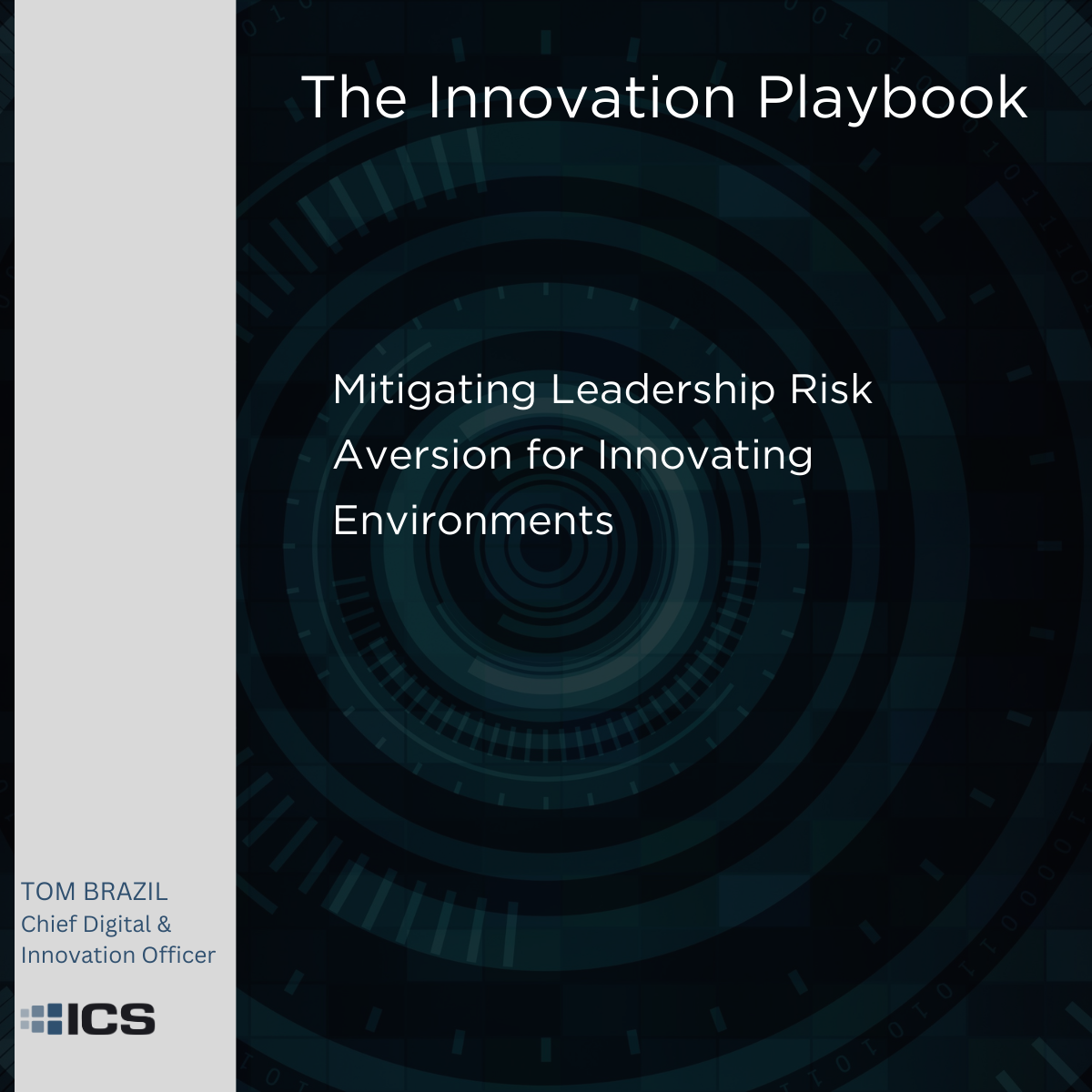

Tom Brazil, CMI-CIO
Chief Digital & Innovation Officer, ICS, Inc.; Chief Innovation Officer, Red Team Engineering
If you are part of an active team of innovators in your organization, and your leadership desires to avoid risk at all costs (pun intended), it is a good thing to understand the journey they took to get where they are — it will help you understand why they aren’t necessarily wrong.
Managing risk is everyone’s responsibility – especially for innovating organizations. In our organization, for instance, our ICS Labs division has to deal with risk in a variety of ways:
- Portfolio Concentration Risk – the risk of having too much of one type of innovation effort.
- Technology Risk – the possibility that technology under evaluation will fail in the context of the target operating environment.
- Financial Risk – The possibility that a given technology may be too expensive, or the switching costs too high, to justify deployment or sales.
- Disruption risk – the possibility that entirely new technologies will displace and significantly outperform existing approaches that they constitute a competitive advantage in the information space (or for the DoD, the Warfighter’s Domains.)
- Creative Risk – in the form of insufficient creativity, where the ideation pipeline is not being filled by enough ideas, concepts, or creative thinking relevant to the strategic objectives of your organization.
- Market risk – The risk of misalignment of innovation efforts due to disruption and the exponential pace of change.
I could go on with this list, but the point is that executives are right to be concerned about risk. Those of us that are innovation leaders, champions, and practitioners must be prepared to methodically manage these risks in our innovation programs in order to keep innovation intent in direct alignment with the organization’s strategic objectives and desired risk profile. We can help in that effort by facilitating one kind of failure while eliminating another.
There are really only two types of failure in innovation.
In the world of innovation, there are really only two types of failure: unintelligent failure (a waste of resources from preventable failures – those that fail to achieve the expected outcome by specifically not accounting for existing knowledge that would have prevented the failure), and intelligent failure (where we tread new ground, fall short, but contribute new knowledge for subsequent attempts.) The former is to be avoided, while the latter is an expected and necessary aspect of innovation.
As an example, my Chief Engineer, Dr. Ben Willett, avoided an unintelligent failure just this week. He was transitioning his Convolutional Neural Network model that he made last year to TensorFlow, and to test it, he applied it in the categorization of stars (he likes to model combined light and dark matter N-body simulations of the Orphan Stream progenitor for fun; go figure). He decided to see if his new model could identify the difference between stars and quasars (something he thought would be new ground.) Lo and behold, it did! Very exciting!
However, it is easy to get sucked into that trap. Effective research is required before we spend money, as we are leery of unintelligent failure. Sure enough, he found a paper from about a year ago that used a very similar ML approach. On a galactic timeline, being beaten by a mere year to such a discovery isn’t bad at all, but it did save us the time and expense of going down a path already taken.
The moral to the story: Executives may be educated to understand risk management, and we may be educated to innovate. Both are required for survival and growth in this age of exponential technological acceleration. We can help them help us by mitigating the unnecessary risks that can occur in innovating environments.
Make failures intelligent!




